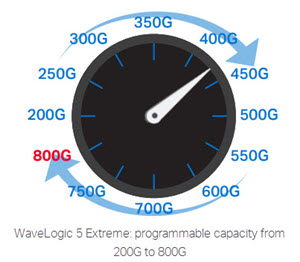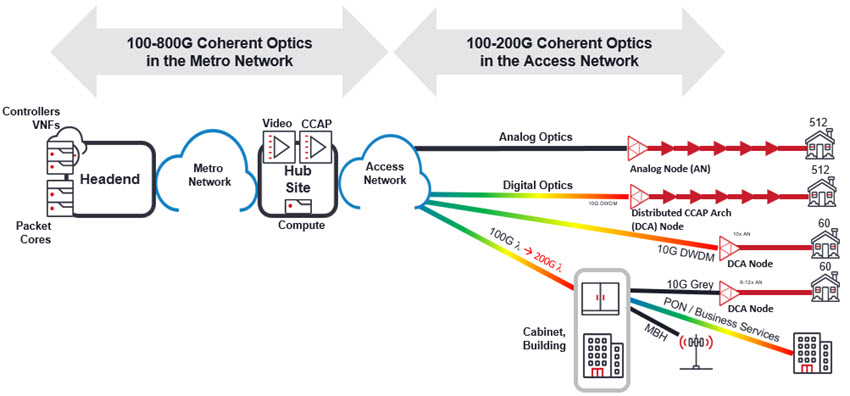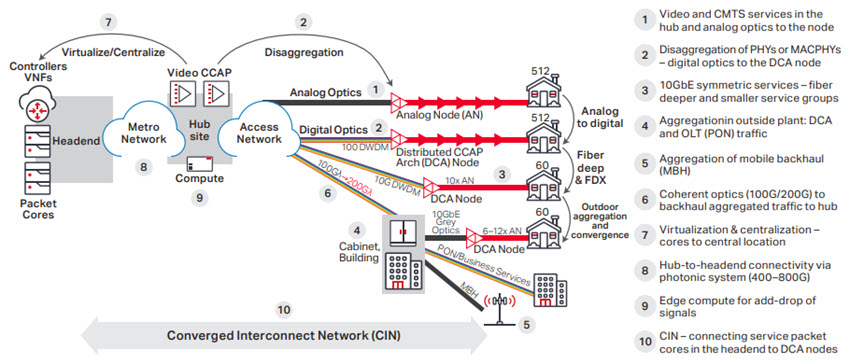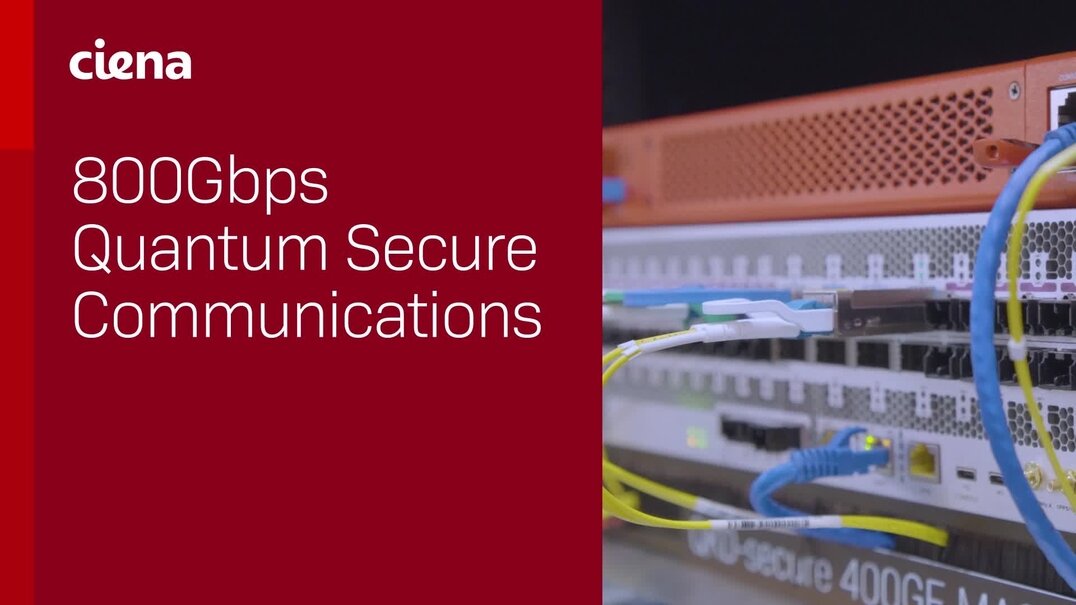How coherent optics improve capacity, performance and competitiveness for cable MSOs
How do coherent optics help cable MSOs address their networking business challenges?
Fernando Villarruel: MSOs must build a foundation for their networks that provides the needed capacity, introduces significant operational and cost efficiencies, and positions their businesses for future growth. This growth includes symmetric bandwidth support for the evolution of packet cores to cloud and aggregation of multiple revenue streams including mobile, business services and IoT.
Coherent optics facilitates growth because it enables massive scalability and maximizes network performance while using far fewer components, reducing equipment costs as well as the time and effort it takes to manage the network. These cost and operational benefits allow MSOs to be more competitive as they can place greater attention on delivering a compelling and differentiating customer experience.
How do coherent optics optimize capacity and performance?
Coherent optics employ a technique well known in the cable RF community—QAM, but in optics! This technology uses sophisticated symbol-based modulation scheme with higher baud to efficiently use the optical spectrum available so MSOs can optimize capacity and reach for a given link. With Ciena’s recently announced WaveLogic 5, we will be able to support 800Gb/s in one wavelength, for transport, and up to 200Gb/s in one coherent pluggable wavelength, in access!
Coherent technology uses enhanced coding techniques to transmit signals over longer distances, increase capacity per wave, and improve spectral efficiency. Leveraging highly instrumented programmable coherent modem and photonic hardware with advanced software applications, Ciena’s Liquid Spectrum fundamentally changes the operational paradigm of optical transport from a static, one-size-fits-all approach to a scalable, open, and programmable one that delivers exact service performance required at any point in time.
 Specifically, Ciena’s coherent technology provides link monitoring information, derived from machine learning, which enables engineers to understand the potential bandwidth possible over a given path to make the most use of deployed fiber assets. With Ciena’s WaveLogic 5 Extreme, for example, engineers can adjust wavelength capacity from 200G to 800G in 50G increments. The industry leading performance of the solution means engineers can implement 400Gb/s across any path in the network, provision 600Gb/s and 650Gb/s for metro-regional distances and achieve 800Gb/s in shorter-distance applications.
Specifically, Ciena’s coherent technology provides link monitoring information, derived from machine learning, which enables engineers to understand the potential bandwidth possible over a given path to make the most use of deployed fiber assets. With Ciena’s WaveLogic 5 Extreme, for example, engineers can adjust wavelength capacity from 200G to 800G in 50G increments. The industry leading performance of the solution means engineers can implement 400Gb/s across any path in the network, provision 600Gb/s and 650Gb/s for metro-regional distances and achieve 800Gb/s in shorter-distance applications.
How are coherent technologies being applied in cable networking systems?
Cable MSOs are designing in the use of coherent optics to optimize the performance of the transport systems between headends and hubs, and aggregation links to digital fiber node aggregators. There are two solutions to tackle network scale, cost, and efficiency challenges. Links between headends and hub sites have the most demanding requirements in the network because they must carry massive amounts of data, and data demands are steadily increasing. The network between headends and hub sites is a great use case for Ciena’s WaveLogic 5 Extreme. The high-capacity coherent optical solution can be deployed on photonic transport systems to provide 200G-800G of capacity over a single wavelength—providing the best scale and programmable capacity in 50G increments.

But bandwidth doesn’t stop at the headend or hub sites. In fact, the primary stage of aggregation can take place closer to customers to aggregate coaxial nodes and Remote PHY/MACPHY devices used in a DAA or Fiber Deep architecture, or ONT/ONU devices used to enable fiber-to-the-home (FTTH). Ciena’s WaveLogic 5 Nano, designed for these use cases, enables coherent optics to provide 100G-200G in a low-power, footprint-optimized CFP2-DCO form factor combined with packet-based technology suited for outside infrastructure, such as street cabinets. With this capability, MSOs will have no trouble delivering high-capacity 10GbE, 25GbE, and 100GbE applications.
What is a CIN and how does it use coherent optics?
The Converged Interconnect Network (CIN) is a packet-based underlay network used to connect Remote PHY/MACPHY Devices or ONU/ONT devices. This underlay can support a variety of architectures, including mobile backhaul and broadband, and a variety of services, from DOCSIS to video, 4G, 5G, and enterprise.

CIN uses coherent optics to scale the network and push more bandwidth deeper in the fiber access network. Coherent optics play an important part in service velocity by integrating packet-based technologies with 100G-800G in the headend and hub and 100G-200G in street-level cabinets or nodes. This is strategically important because in many cases, service velocity is the determining factor in winning new service sales or maintaining existing revenue(s).
How does coherent technology reduce costs and complexity?
Coherent optics allow better use of fiber assets (wavelengths), which are particularly valuable in the access plant. It also reduces the management of immense WDM access networks by transmitting as much data as possible per one wavelength.
The use of modern, lower-power coherent packet-optical technologies then is key in eliminating the total cost of ownership and complexity associated with deploying otherwise separate packet and optical devices. WaveLogic 5 coherent optical technology helps Cable MSOs scale their networks, from core to the edge, with the right footprint, power, and operational requirements they need for different transport and access requirements. Performance-optimized WaveLogic 5 Extreme and footprint-optimized WaveLogic 5 Nano solutions enable Cable MSOs to realize the scale, programmability, and intelligence necessary to achieve networks that can readily adapt to change.
As optics need hosts, Ciena’s sleek shallow depth and front access 5171 equipped with WaveLogic 5 Nano is the perfect fit for external cabinets, deployment of outdoor aggregation of 1/10/25/100 to 100/200 GbE, enabling high-capacity at the outdoor-edge.
Coherent optical technology addresses Cable MSO requirements through a range of packet-coherent solutions for vastly improved network economics, reach, cost, power, and footprint.









